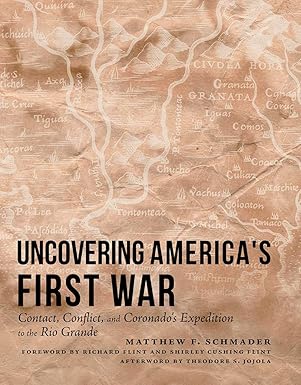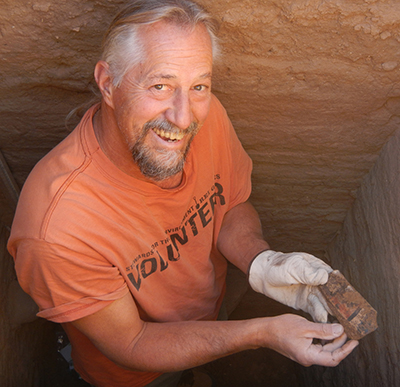
Long before history books recorded the American Revolution or the Civil War, a violent conflict began in the Rio Grande Valley, marking what some archeologists call America's first war.
Anthropology Adjunct Research Professor Matthew Schmader in the department of anthropology at The University of New Mexico has been investigating this conflict and the events leading up to it for the past 20 years. His research has culminated in the completion of a monograph textbook titled Uncovering America's First War: Contact, Conflict, and Coronado's Expedition to the Rio Grande, published by UNM Press in late March.
"I enjoyed working with UNM Press. Their editorial and technical staff are great, and I liked the idea of working locally," said Schmader, a UNM alum. "The Press showed great support and encouragement throughout the process, and I'm grateful for their interest from the beginning."
His book serves as a comprehensive guide to his findings, featuring 11 chapters along with a list of illustrations and tables, a foreword, preface, introduction, afterword, acknowledgements, glossary, references and an index.
As Schmader began consolidating and summarizing his findings for his book, he was able to trace his research and identify a specific series of events that led to the conflict and influenced how the Pueblo communities and their descendants survived against all odds.
He is in awe of how today's Puebloan communities have lived here since the conflict and how their survival has shaped the culture of New Mexico.

Schmader has sought to understand how Francisco Vázquez de Coronado and his army arrived in the valley and impacted the Pueblos' way of life. At the time of Coronado's arrival, the local population was between 10,000 and 20,000.
The conflict began in 1540 when Coronado, one of Spain's best known explorers, ventured north from present-day Mexico into New Mexico. With his army, Coronado ultimately reached the heart of the Rio Grande Valley, in part of what is now Albuquerque. Coronado was unprepared for that first winter in the valley; his choices for survival sparked the conflict, culminating in the brutal Tiguex War.
Over the years, Schmader has participated in and led many research projects, ranging from local digs to meta-analyses. He has written numerous articles, presented at various professional conferences and served as the Albuquerque City Archaeologist for 10 years.
One of his most significant discoveries was the distribution of rocks thrown from rooftops, which provides physical evidence of how the Puebloans defended their village during the conflict. Their initial defense held out until they finally surrendered due to lack of water.
"For me, this book represents the conclusion of two decades of research and a way to conclude that work in a meaningful way," said Schmader. "It is also important to shine light on our collective pasts, but probably now more than ever, given the current state of revisionist history and politics."






